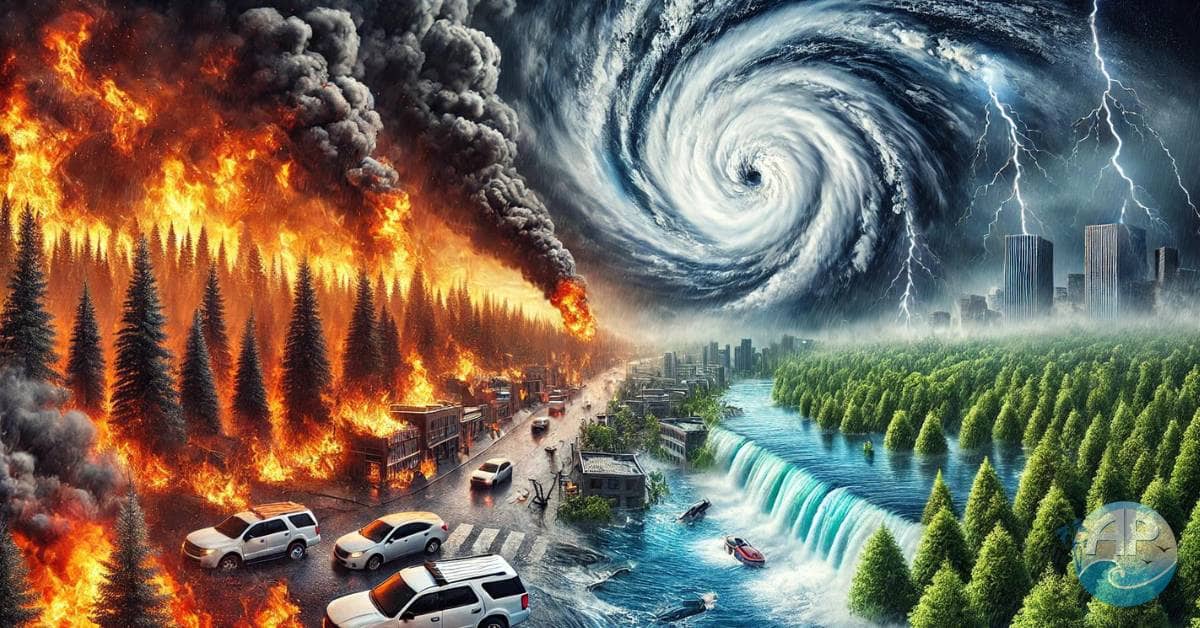The Rise in Natural Disasters: Why Preparedness is More Critical Than Ever—Tips You Can’t Afford to Ignore
Table of Contents:
- Understanding the New Normal
- Hurricanes, Floods, and Wildfires
- The Mental Game: Preparing Yourself
- How Prepared Are You Really?
- Building Your Resilience
The world has changed. Natural disasters are no longer once-in-a-lifetime events. The reality is clear—the rise in natural disasters means we must be prepared.
It’s no longer about if a disaster will happen, but when. From wildfires to floods, these events are becoming a regular occurrence. And the consequences of not being prepared can be devastating.
Understanding the New Normal
We all see the news—hurricanes battering coastlines, floods overwhelming entire cities, and wildfires blazing uncontrollably. The rise in natural disasters is impacting places that used to be considered safe, and being prepared is now essential.
You can’t predict the next disaster, but you can be ready for it. When it comes to hurricanes, floods, or wildfires, being proactive can save lives.
- Hurricanes: These powerful storms are becoming more dangerous. High winds and intense rainfall are wreaking havoc on coastal areas.
- Floods: Floods are occurring in places that have never seen them before. Flash floods and rising water levels can destroy homes and infrastructure in minutes.
- Wildfires: The spread of wildfires is faster and more unpredictable than ever. Suburbs and urban areas are no longer immune to the flames.
But here’s the upside: by taking small steps, you can protect yourself and your family from the unpredictable.
Hurricanes, Floods, and Wildfires—Oh My!
Let’s break it down by type:
Hurricanes:
These massive storms cause destruction through high winds and torrential rain. While coastal regions are hit the hardest, the damage can stretch inland for miles.
- Tip: Be sure to create an evacuation plan. Know your route and have supplies ready.
Floods:
Floods aren’t just happening in flood zones anymore. Heavy rainfall can cause flash floods even in dry regions. Knowing your area’s risk and staying prepared can make all the difference.
- Tip: Stockpile sandbags and have a sump pump ready if your home is at risk.
Wildfires:
Fires are becoming more intense and spread quickly. Even suburban areas that were once considered safe are now vulnerable to wildfires.
- Tip: Keep a go-bag packed with essential items in case of an emergency evacuation.
The Mental Game: Preparing Yourself
Preparedness isn’t just about having the right supplies—it’s about being mentally ready. When a disaster hits, panic can make things worse. Those who stay calm and think clearly are the ones who come out ahead.
Mental resilience is your most powerful tool in any crisis.
Why is mental preparedness so important?
- It helps you avoid rash decisions.
- It allows you to adapt to changing situations.
- It keeps you calm when others are panicking.
Tip: Practice mindfulness and meditation to build your mental toughness. Run through possible disaster scenarios and think through your actions. The more you practice mentally, the easier it will be to stay calm when the time comes.
Master the Art of Mental Preparedness to Stay Calm, Focused, and Resilient in High-Stress Situations.
How Prepared Are You Really?
Most people think they’re ready—but are they? It’s easy to feel safe until the moment disaster strikes. Let’s make sure you’re not caught off guard.
Here’s a checklist to help you evaluate your preparedness:
- Create a Go-Bag: Fill it with essentials—water, non-perishable food, medical supplies, and important documents.
- Know Your Evacuation Routes: Practice how you’ll leave your home and where you’ll go in case of an emergency.
- Have a Communication Plan: Make sure you and your loved ones know how to stay in touch during a disaster.
- Stock Up on Supplies: Batteries, phone chargers, and tools like a multi-purpose knife can be lifesavers.
When you’ve covered these basics, you’ll have the peace of mind that comes with knowing you’re prepared.
Building Your Resilience
Preparedness doesn’t end with a go-bag. The rise in natural disasters has shown us the importance of long-term resilience.
Think of it as a lifestyle shift. Here’s how to build long-term disaster resilience:
- Learn Essential Skills: From first aid to water purification, basic survival skills can make all the difference.
- Join a Preparedness Community: Whether it’s a local group or an online forum, having a support network gives you extra resources.
- Stay Informed: Use apps for weather alerts and local emergency updates to stay ahead of disasters.
“By failing to prepare, you are preparing to fail.” — Benjamin Franklin
By taking these steps, you’re not just surviving—you’re thriving, no matter what disaster comes your way.
The Ultimate Guide to Emergency Preparedness
Want more tips? Check out our Ultimate Guide to Emergency Preparedness and Self-Reliance, packed with strategies to protect yourself and your family. Whether you need a checklist or survival hacks, this guide has it all.
Disasters are unpredictable, but your preparedness doesn’t have to be. The rise in natural disasters may be inevitable, but you can face it head-on by building your mental and physical resilience.
Taking these steps now ensures that, when disaster strikes, you’ll be ready. Preparedness is more than a list of supplies—it’s a mindset.


